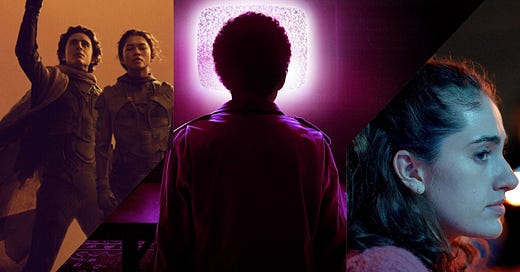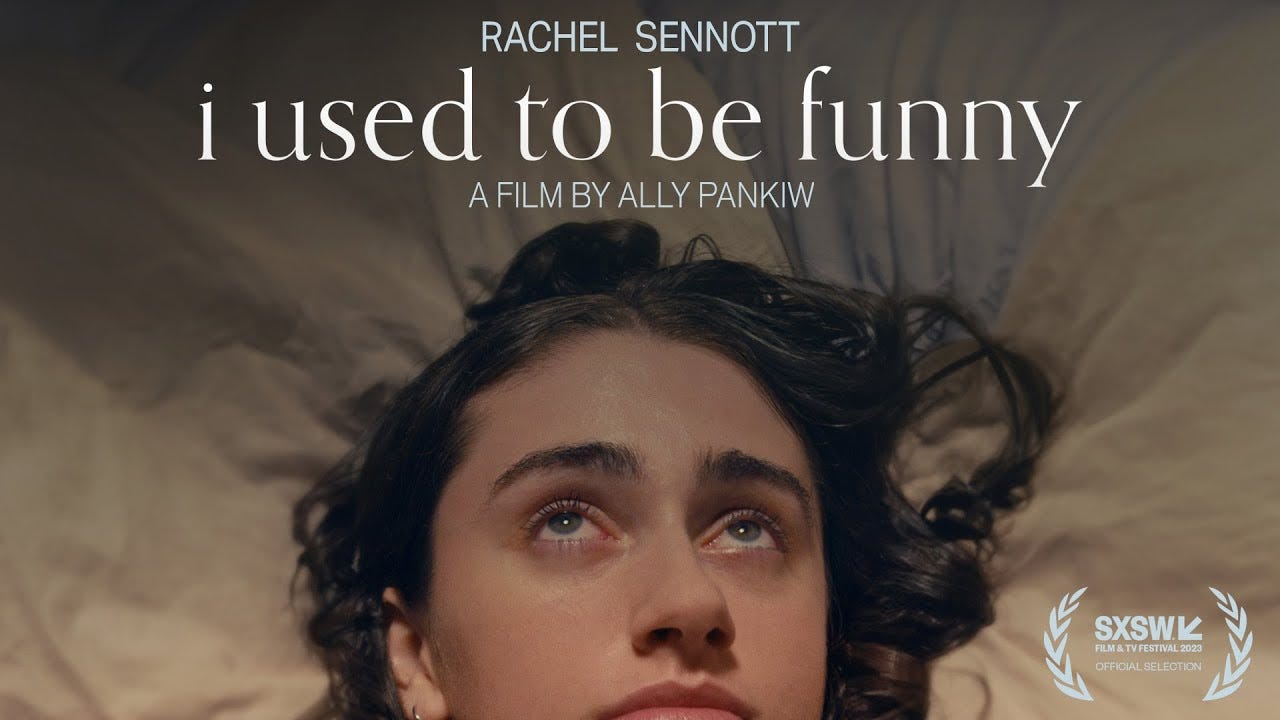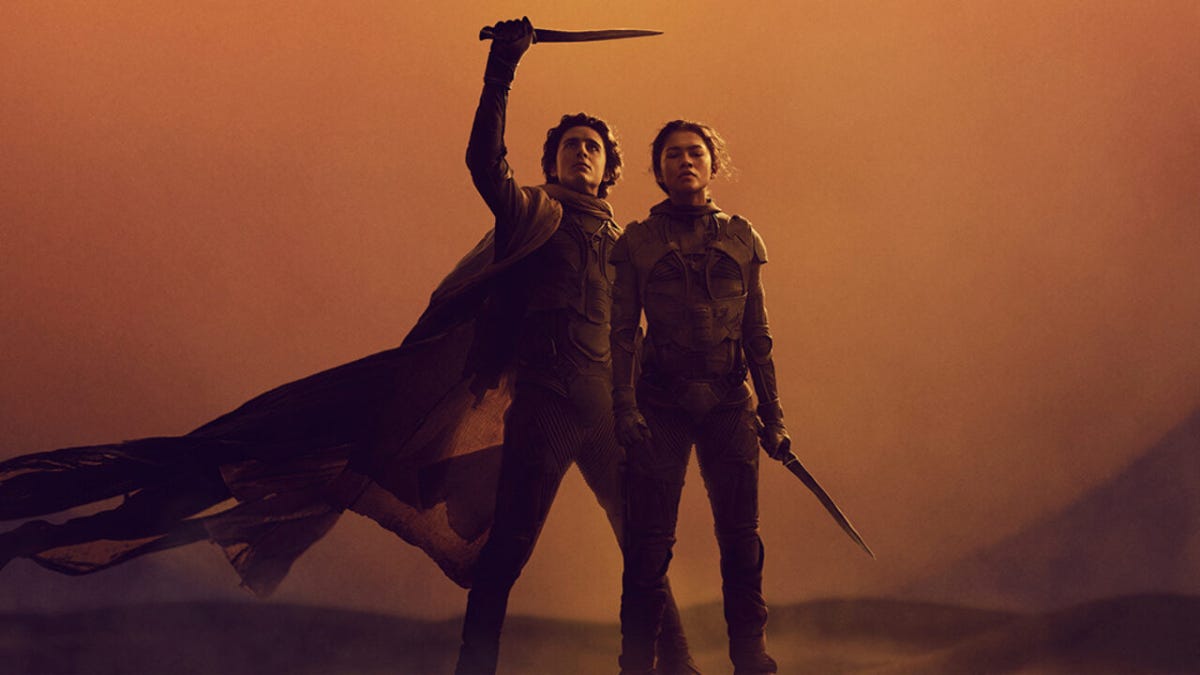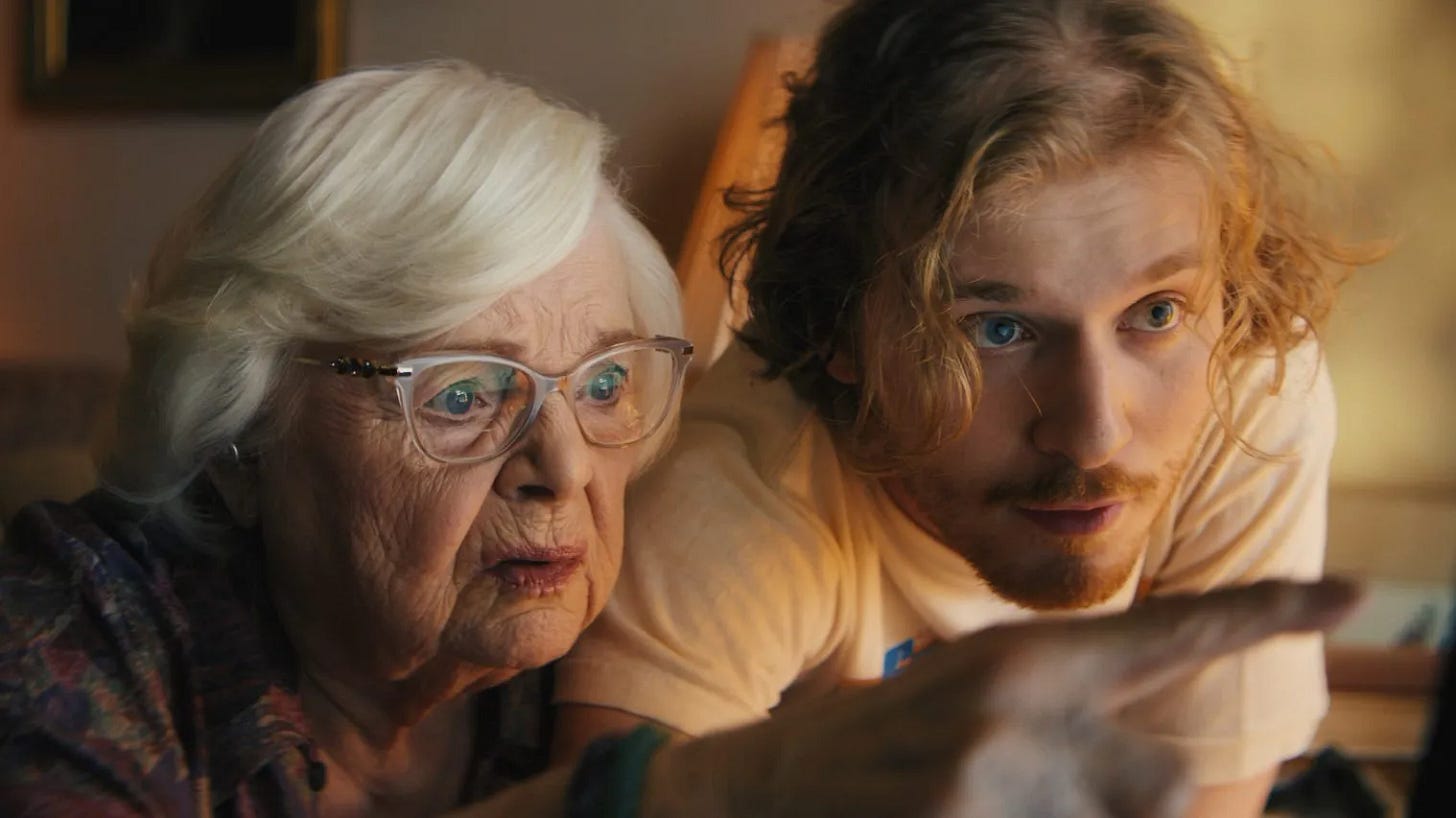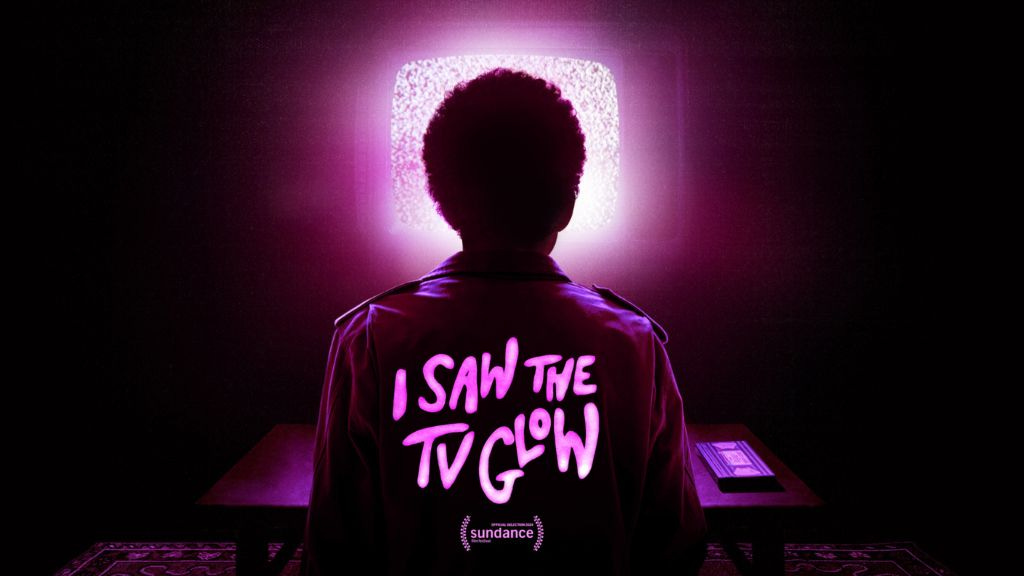Seven Movies I Loved From The First Half Of 2024
Some cinematic gems from January to June 2024...
I’m not big on New Year’s resolutions.
Don’t get me wrong, I support people wanting to better themselves or setting out to accomplish something. But, if I want to change something about myself or achieve a new goal, I’m not going to wait for an arbitrary date that society has decided means something because we have to buy a new calendar.
I bring this up because, at the start of this year, I was listening to an episode of the podcast Offline, where co-host Max Fisher discussed New Year’s resolutions with some of his colleagues. Part of the point of the discussion was to suggest that resolutions didn’t have to be exclusively self-help or personal improvement, they can just be stuff you want to do. In that spirit, one of the guests brought up that their New Year’s resolution had been to watch 200 movies.
To my slight surprise, this struck a chord with me. I love movies, always have. I even have a degree in film studies (for whatever that’s worth). But somewhere over the years since I graduated, I realized I had stopped watching movies.
Obviously, I hadn’t stopped entirely. I would still check out the latest blockbusters and occasionally go with friends to a comedy or buzzy drama. But, those trips to the cinema were becoming fewer and farther between. And it wasn’t like I was utilizing the massive library of films available on streaming sites either. My streaming habits were falling back into just watching episodes of The Office and/or The Clone Wars over and over again.
So, I decided for 2024 my New Year’s resolution was to watch more movies. I didn’t put a number on it like the guy on the podcast. But I set out to fall back in love with cinema.
And I did.
So far this year I’ve watched 38 movies. Is that anywhere near the pace I’d need for 200? No. But it’s at least 30 more than I could have said at this time last year. Am I also cheating a little by allowing myself to count movies I’ve already seen before? Yes—you’ll find four Star Wars movies in my tally—but the sole point of this is to have fun watching movies, so who cares?
With that in mind, here are seven movies released in 2024 that I’ve loved.
7. I Used To Be Funny
A sub-goal on this loosey-goosey New Year’s resolution was to watch more Canadian movies. Over the years I’ve met several wonderfully talented people involved in the Canadian industry and I would love to see them get the opportunity to tell their own stories rather than just putting their skills to work on American productions shot in Canadian cities.
One movie that I would like to think bodes well for Canadian cinema is I Used To Be Funny, the debut feature from Ally Pankiw (who directed several episodes of Mae Martin’s Feel Good for Netflix). It tells the story of a former stand-up comedian and nanny, Sam (Rachel Sennot), who is dealing with the aftermath of trauma. The film is very funny in places, utilizing some great Toronto-based comedians in supporting roles, and depressingly dark in others.
It effectively uses flashbacks to unravel the central mystery: what caused the rift between Sam and Brooke (Olga Petsa), the teenager she used to Nanny who has gone missing. Both Sennot and Petsa turn in fantastic performances, complimented by former Daily Show correspondent Jason Jones who is unexpectedly dark and restrained in his role (a stark contrast to the borderline slapstick roles he usually plays).
The film covers a lot of ground in its 106-minute runtime but never feels like it’s overextending itself. Pankiw clearly wants to explore themes about trauma and recovery but avoids coming off as preachy. As a result, I Used To Be Funny feels authentic and thoughtful. It’s not light viewing by any stretch, but it challenges the audience to think and reflect.
6. Civil War
It’s ironic that a movie all about the power of images succeeds, largely, on the power of sound.
Alex Garland’s political (but also not political) dystopian thriller is a movie truly best experienced in a movie theatre. Because while many people have big, fancy TVs these days, most still haven’t invested in a big, fancy sound system to go with it. And I’m not sure the all-encompassing nature of the war scenes would carry over with your standard, built-in TV speakers. Not since Christopher Nolan’s Dunkirk has a major motion picture used sounds so effectively to thrust the audience into the horrors of war.
This movie is a visceral experience. The sound of gunfire feels more present and real, and therefore dangerous than in your standard action movie. The experience becomes far more harrowing and left me feeling like I needed to exit the movie theatre as fast as possible once the movie was over, a new experience for me.
Civil War’s narrative is fairly straightforward, but for this movie that’s almost beside the point. Are we meant to care about the characters? Sure. But the film is more interested in exploring what it would actually be like if there were a modern civil war. The characters are our way into that, but the battle scenes reveal less about the characters and more about the theme, which Kirsten Dunst's character vocalizes early in the film: don’t let this happen here.
And then, of course, there’s the Jesse Plemons scene. The former Breaking Bad star steals the movie with just one, relatively short scene that, compared to many of the action sequences in the film, is light on spectacle. Up to this point, Civil War was cautious to avoid depicting any one faction as “right” or “wrong” (except the clearly authoritarian president played by Nick Offerman). And it goes out of its way to avoid drawing too many obvious parallels with modern politics (how California and Texas became a united faction is never explained). That all changes here.
While Plemons’ allegiances are never truly revealed, it’s clear he’s not a “good guy” and is intent on killing anyone who is not a “real American”. He kills without a second thought, giving the scene a truly unpredictable feel. It’s a testament to Plemons’ talent, with his laid-back style, that in a movie full of spectacle it’s the actors standing around talking that is truly unforgettable.
5. Hit Man
I’ll be honest, before this movie, I wasn’t sold on Glen Powell as a leading man.
Sure, like the rest of the world, I’d seen him opposite Sydney Sweeney in Anyone But You. And I thought he was fine in that. But when I saw him in the trailer for Twisters, where he’s supposed to be the coolest guy in the world, I thought, “Really?”
Then I saw Hit Man.
I get it now.
Powell carries the movie as Gary, a police consultant who takes on different personas to elicit confessions out of would-be criminals looking to hire a contract killer. He gets to have a lot of fun with the various characters his character plays in the sting operations, while also doing an excellent job playing someone reserved and modest coming out of their shell.
The movie is a farce and makes no effort to hide this. There are lots of laughs to be had and the love story at the center of it is patently ridiculous—Powell’s Gary falls in love with Madison (Andor’s Adria Arjona), a woman looking to hire a hit man to take out her abusive husband. The only problem is she’s in love with the hitman persona Gary has put on, not the real him. But the absurdity is what makes it fun.
Powell, Arjona, and director Richard Linklater get the audience to buy into the outrageous world of Hit Man (Linklater and Powell co-wrote the script). When you boil it all down, it’s a fantasy masquerading as a police procedural. The result is a fun time at the movies, and sometimes that’s exactly what’s needed.
4. Riddle of Fire
It would be easy to write off Riddle of Fire as a Stranger Things knockoff. And sure, there are a lot of surface-level similarities. Both are inspired by 80s classics like The Goonies and Stand By Me and feature bike-riding children on an adventure that involves the supernatural.
But in feel and tone, the two couldn’t be more different. Where Stranger Things is visceral horror, Riddle of Fire is lyrical fantasy. Stranger Things takes its characters out of their childhood and thrusts them into the big, scary world. Riddle of Fire embraces childhood whimsy, fantasy, and adventure, to the point where we’re meant to wonder how much of it is “real” and how much of it is childhood imagination at play.
This is not to say the stakes don’t feel real. Part of the brilliance of Riddle is how it gets you to buy into the world of the kids, where making the perfect blueberry pie for their sick mother is worth risking life and limb to steal an egg from a nasty trucker and his literal witch-sister. The adventures that follow maintain this heightened sense of reality as the kids, having ventured into the woods alone, make their way back home.
The child actors in Riddle are far less polished than their Netflix counterparts, which takes some getting used to but ultimately plays into the fantasy nicely, supporting the feeling that any of this could easily be real or make-believe.
Riddle of Fire plays off audiences’ love for the movies that inspired it, however it manages to resist giving in to nostalgia. Part of this is the modern setting, but there’s more to it. The film feels like a declaration that this sort of kids-on-an-adventure movie can be made for modern audiences, without a parade of “hey, remember this?” references to the pop culture of days gone by.
If Stranger Things is for adults who loved those sorts of stories as a kid, Riddle of Fire invites a new generation of kids to fall in love with those stories too.
3. Dune Part Two
I first read Dune in the summer of 2020. As a sci-fi fan, it felt like a right of passage, going back to one of the stories that inspired so many of the stories that I had come to love. And I enjoyed it, it was a good summer read. But while the story was engaging, Frank Herbert’s writing style is not the sort that I find easy to read. For that reason, I was really looking forward to the Denis Villeneuve cinematic adaptation.
I liked Dune Part One a lot when it came out in fall 2021, so expectations were high for its follow-up earlier this year. And Part Two managed to blow those expectations out of the water. The sequel takes what worked so well in the first one and improves on it, while also course-correcting on a few weaknesses too.
One place, in particular, where Part Two feels like an improvement on its predecessor is in its lead. That said, I don’t view this as one of the course corrections. Rather, it’s a side effect of splitting one novel into two movies. Paul Atreides’ arc is one of a prince raised in a palace, being forced out into the real world where he lives among the Fremen, learns their ways, ingratiates himself to them, and becomes a charismatic (and scary) leader.
By splitting the story in two, there is a massive pause at the turning point of the story that doesn’t exist in the novel. We’re left for two-and-a-half years with just the memory of Paul the palace prince forced out into the world and base our opinions of him on that. Any character at the beginning of their story is going to be less interesting than where they wind up. And in Part Two we finally get the delayed pleasure of Paul at his most interesting.
Timothy Chalamet is finally able to break out from the soft-spoken performance that he is often typecast in and gives a fiery performance that you can’t take your eyes off of. The scenes of him commanding the Freman are intense and upends the classic hero narrative the first film appeared to be setting up. We’re no longer sure Paul will save the day, instead, as Zendaya’s Chani does, we begin to believe he will bring nothing but death and destruction.
Makes you wonder about other charismatic leaders who claim they alone save the day.
2. Thelma
The premise for this movie—what if you took Mission Impossible and replaced Tom Cruise with a Grandma—sounds like an SNL sketch. But across its 98-minute run time, Thelma is so much more than that.
The movie follows Thelma (June Squib), a 93-year-old who falls victim to a scam, costing her $10,000. After the initial shock, she decides she’s going to get what she lost back, with only the help of an old acquaintance and without telling her family where she’s going. Through her journey, the movie reflects on aging and the experiences seniors have when their friends start to die off and their faculties diminish.
And yes, Thelma does draw lots of humour from shooting scenes of her travelling on her mobility scooter as though they were car chase scenes.
Together, Thelma and her sort-of friend Ben (Richard Roundtree) navigate a world that has left them behind. There’s a lot of heart in their dynamic, even as they argue about the best way to handle their changing situations. Writer/director Josh Margolin does an excellent job of presenting each of their choices as valid, giving the characters great agency even in their tough positions. And Squib and Rountree do a tremendous job of conveying their determination, sadness, love, and caring.
Interestingly, in a film about aging, Thelma also takes a very sympathetic view of young adults and youthful aloofness. Thelma’s biggest supporter in the film is her grandson Danny (Fred Hechinger), who takes her disappearance extremely hard. Danny is struggling to find his way in life post-school and has taken on caring for Thelma as a sacred duty. Danny could have easily been portrayed as a loser, but instead, he’s endearing and caring. He just needs time to find his way.
It’s the generation in between the seniors and young adults that comes in for the most chiding from the film. Thelma’s daughter and son-in-law (Danny’s parents) are presented as unable to relate to either generation bookending them. At the same time, they try to project the impression they know what’s best for everyone—but without listening to what anyone actually wants or needs.
Thelma runs the gambit of emotions, being equal parts funny and sad, caring and harsh. It celebrates kindness and determination, without shying away from the cruelty that exists in the world.
1. I Saw The TV Glow
They say you can’t judge a book by its cover. Well, along those same lines, you can’t judge a movie by its poster. And I know this because I nearly missed out on my favourite movie of 2024 (so far) because of the poster.
As a general rule, I don’t like horror movies. So when I saw the poster for I Saw The TV Glow, I immediately wrote it off as a horror movie and therefore made no plans to see it. Then I saw the trailer and was immediately intrigued. A quick trip to the A24 subreddit (to confirm that it was “light horror”) and I had my tickets.
The story follows Owen (Justice Smith) and Maddy (Bridgette Lundy-Paine), two middle school outcasts who are brought together by a shared interest in the TV show “The Pink Opaque” (a very loose homage to Buffy the Vampire Slayer). What initially feels like a budding friendship based on a shared interest in a niche piece of pop culture (not unlike many of the friendships I’ve been lucky enough to build around Star Wars), begins to take a supernatural turn.
Both Smith and Lundy-Paine are terrific in their roles as disaffected youth and carry the narrative through its unusual and unexpected twists and turns. The film uses its sci-fi elements to explore themes of queer youth grappling with their sexuality and gender identity. And the script, along with the two leads navigates those waters with great care and grace.
But I Saw The TV Glow doesn’t play it safe or pull its punches. The film resists the urge to put everything neatly into satisfying little boxes, with a happy ending and loving lessons. It ends abruptly, but that’s the point. The story is ultimately a tragedy, speaking to a harsh reality that is at odds with the fantasy of “The Pink Opaque”. It’s a thrilling ride that asks the audience to ponder what the point is.
***
It’s been noted many times by many people that with every passing year, our notions of genre when it comes to stories (film, novels, TV, etc.) get more and more nuanced. Stories are no longer viewed as being just one “type” of story. It’s no longer just “action,” “comedy,” “drama,” and “horror.” Now we keep “horror-comedies”, and “action-dramas.”
Overall, this is a good thing. Stories are getting more varied and storytellers no longer feel they have to keep their ideas in one single lane.
But, it does make it harder for audiences to pick what to watch or read next. Not only is a “comedy-drama” a frustratingly vague descriptor, but it can also mean different things depending on the storyteller and the person describing it.
In that spirit, I’ve tried to avoid (for the most part) using these traditional genre descriptors to describe the movies I’ve written about above. Instead, I’m going to try a little experiment. For each movie on my list, I’m going to use one word to attempt to convey the type of movie it is—and what the viewing experience is like—for anyone who hasn’t seen them but might be interested.
Is this going to be better than using traditional genres? I have no idea. But let’s give it a whirl and find out.
Harrowing: I Used To Be Funny
Visceral: Civil War
Funny: Hit Man
Whimsical: Riddle of Fire
Epic: Dune Part Two
Heartfelt: Thelma
Unnerving: I Saw The TV Glow
Part of the joy of this little New Year’s resolution has been seeking out different types of movies. I’ve made a conscious effort to make sure the list isn’t just full of Marvel movies and their ilk.
The world of cinema is wide and wonderful. And while I still feel like I’ve only scratched the surface, it’s been great fun going back to the movies.
